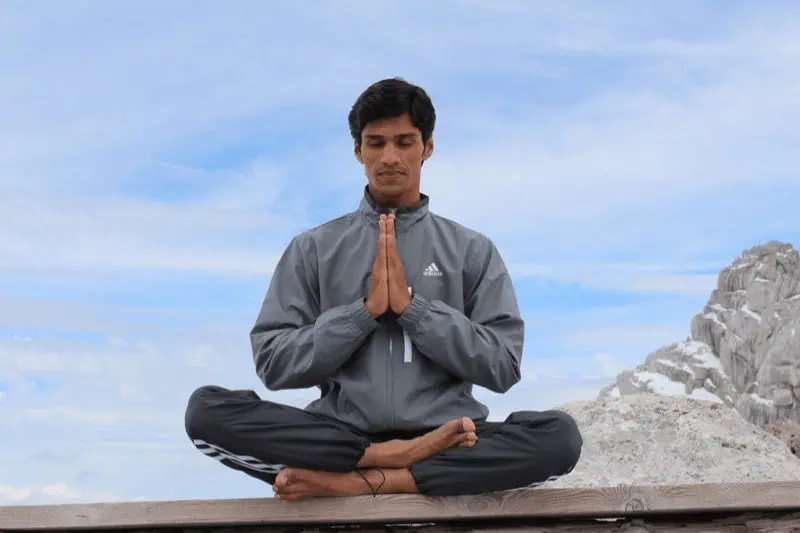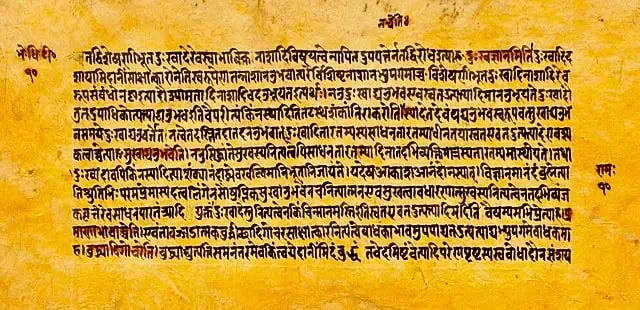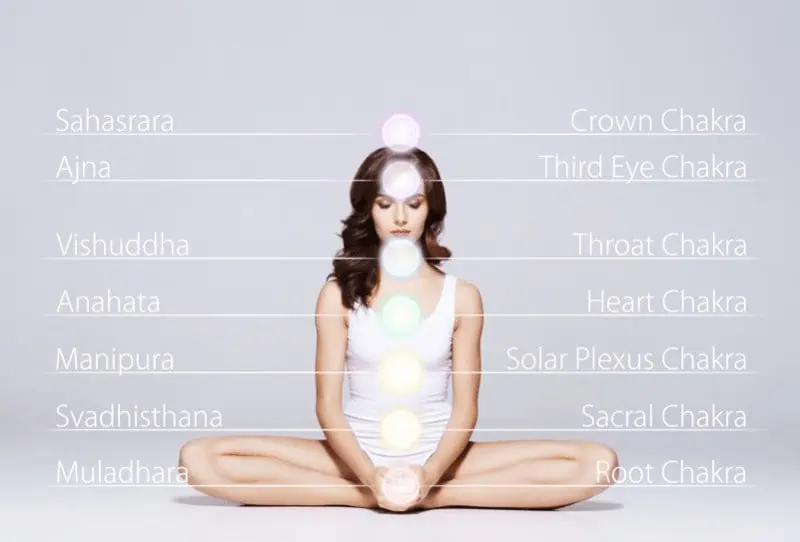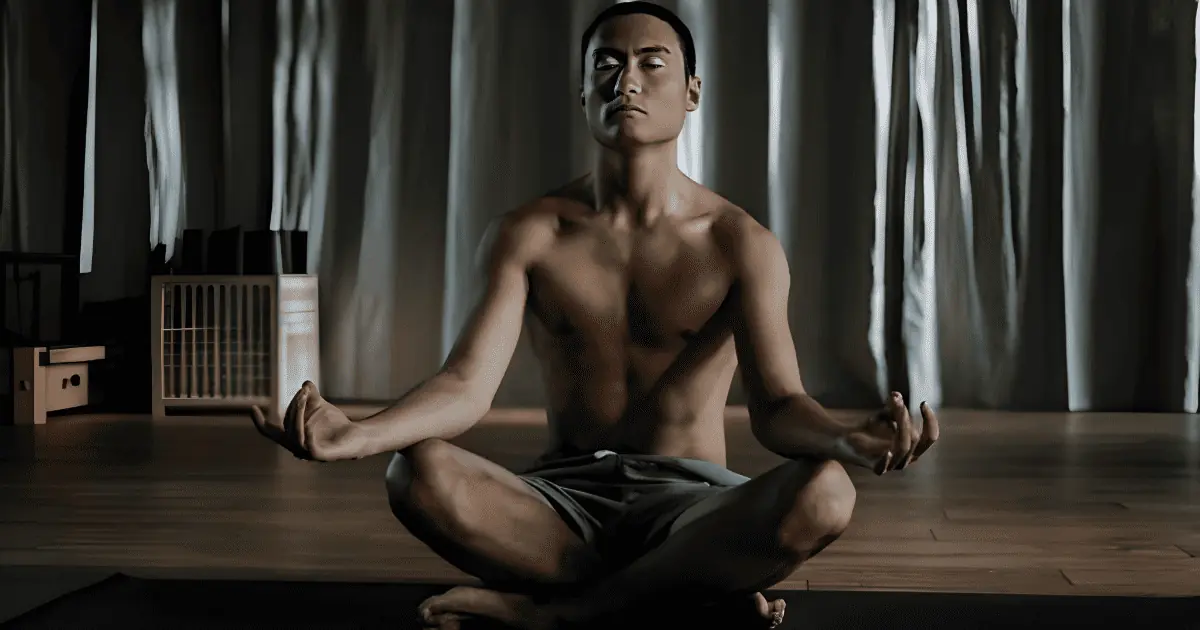Stepping into a yoga studio when you’re a beginner can be intimidating for many reasons. Long before I became a yoga teacher, I remember feeling overwhelmed by all the Sanskrit words, yoga terms, and complicated pose names when I started taking yoga classes.
I knew that yoga could be a profound and transformational experience. Yet, I didn’t understand what the teacher meant when she directed us to use “ujjayi breath” or “engage mula bandha.” I felt like I was missing out on the complete yoga experience.
Diving into practice without grasping common vocabulary, like mudra, bandha, and asanas, is like navigating a new city without a map; it’s doable but unnecessarily challenging. Familiarizing yourself with key phrases such as yama, sutra, and sun salutation can help you feel more comfortable and confident when you enter a room full of yogis ready to flow.
Of course, any effective yoga teacher should explain a Sanskrit word in a way all students will understand. But knowing some yoga vocabulary before you attend a class helps bridge the gap between wide-eyed beginners and seasoned yogis, turning complex concepts and philosophies from the yoga sutra into meaningful experiences that resonate both on and off the mat.
Understanding yoga vocabulary transforms mere words into powerful tools that unlock a more profound, cohesive practice. Let’s demystify some of these common yoga terms together.
Contents
Yoga Vocabulary Glossary for Beginners
Yoga is a rich cultural practice with specific, technical terminology, like mudra, postures, meditation, and chakra. Let’s break down some key yoga terms that will have you speaking “yogi” in no time!
Asana Basics
Asana refers to the physical postures in yoga, many of which provide a robust workout for your body. Each position has a specific purpose in strengthening or stretching muscles, aligning chakras to open energy channels, or promoting relaxation.
Here is some asana-focused yoga vocabulary to help you navigate your first yoga class.
- Mountain Pose (Tadasana) is a fundamental yoga posture practiced by standing tall with feet together and arms by your side. It begins and ends many yoga sequences, such as the Sun Salutation.
- Downward Facing Dog (Adho Mukha Svanasana) is a pose that brings the body into an inverted position, hands and feet separate, and hips toward the ceiling in the shape of an upside-down “V.”
- Chaturanga (shortened version of its full name, Chaturanga Dandasana) is a strength-building pose that fires up your whole body as you lower halfway from a high plank position.
- Warrior Pose (Virabhadrasana) is another asana you’ll flow through frequently in a Vinyasa or Hatha yoga class. It’s like a high lunge with your back foot slightly out-turned, arms reaching over your head. In the variation Warrior II, your torso opens to the side, and your arms extend out from your shoulders,
- Corpse pose (Savasana) is how we end most yoga classes, lying flat on your back with your eyes closed. It is a time for integration and relaxation.
- Sun Salutation (Surya Namaskar) is a standard sequence in Vinyasa yoga that utilizes several poses above. Check it out in our article here.
Namaste Nuances
Namaste is one of the most recognized and repeated yoga words, but it’s more than just a thing to say to another yogi at the end of a yoga or meditation class. It’s an act of respect imbued with spiritual connection.
When you bring your palms together at your heart center (anjali mudra), bow your head, and say “Namaste“ in your yoga class, you recognize and honor the soul shine in someone else.

Drishti Pointers
Have you ever tried focusing your eyes while holding a yoga pose, staring at one spot as you balance? That’s drishti. This focused gaze, a fundamental technique in yoga, increases your concentration and is an essential tool for achieving balance during tricky poses.
When you focus your drishti, you also focus your energy to keep your mind from wandering off when you need to stay put.
- Nose Tip (Nasagrai Drishti): A yoga and meditation technique focusing on the nose tip for concentration.
- Hand Thumb (Hastagrai Drishti) Technique: Eyes fixed on the hand during yoga poses like Warrior II.
Knowing even a few essential pieces of yoga vocabulary, like the names of common postures, will help you feel more confident when you walk into your next class.
Remember these words next time you roll out your mat for your practice. They’ll help progress your technique, channel your energy, and connect with others in the community.
Significance of Sanskrit in Yoga

Sanskrit connects us to yoga’s roots. It preserves yoga’s heart through sound and meaning. Although many yoga teachers use the English names of yoga postures, learning the proper Sanskrit words helps sustain the ancient traditions of the practice.
Ancient Language Connection
Sanskrit is like a bridge linking today’s yoga enthusiasts to ancient wisdom. Imagine chatting with someone from thousands of years ago. That’s what happens when you use Sanskrit in yoga.
Preserving Traditional Sounds
Sanskrit is a classical language primarily used in spiritual practice, philosophical texts, and ancient literature. It is not widely spoken today, so the sounds are unique to many Western ears. Pronunciation and emphasis make a big difference in spoken Sanskrit.
So, when you learn a new Sanskrit word, look up its accurate pronunciation to sound like a real yogi.
Deepen Your Practice with Sanskrit Wisdom
When you learn Sanskrit, it can offer new perspectives and interpretations of your yoga practice. Consider these potential situations:
- In a yoga class, a new student learns the meaning of the term asana as “seat” or “posture.” Now, she can more easily recognize the names of new poses during the class.
- You discover the Sanskrit word “Pranayama” translates to “life force regulation.” All of a sudden, your breath holds more power. When you practice pranayama techniques, your breathing becomes a conscious act to expand your life energy flow.
These examples show learning Sanskrit isn’t just academic—it changes your whole yoga class experience and adds a profound connection to your practice.
Deepening Philosophical Understanding
Yoga is more than a physical movement practice of bringing your body into different poses. It’s a whole philosophical system with ancient roots. Familiarizing yourself with some of these philosophical concepts can take your yoga to the next level, from a physical workout to more of a spiritual practice.
Some of these yoga words you may have heard before. But did you know their meaning?
- Karma: the law of cause and effect, like a cosmic balance.
- Karma Yoga: the act of doing good without expecting anything in return.
- Dharma: duty or righteousness, acting according to moral principles.
- Tantra: a practice that expands consciousness and connection to the divine.
Learning from Sacred Texts
The Yoga Sutras are a collection of teachings by the guru Patanjali, which many yoga teachers reference.
- Yoga Sutras: Consider them an instruction manual for practicing yoga and life in general.
- Yama: the Yoga Sutras explain the five yamas as ethical guidelines for living life.
- Guru: according to Patanjali, a spiritual teacher or guide.
- Ashtanga: eight limbs (literal translation), referring to the eightfold path of yoga outlined by Patanjali in the Yoga Sutras.
Learning these words helps you understand the historical and philosophical context of yoga.
Anatomy and Alignment in Poses
Yoga is all about balance and harmony in each posture. Yoga anatomy applies to your physical and ” subtle ” bodies — your energy flow and life force.
Know Your Energetic Body
Many different yoga poses and breathing exercises are practical tools for cleansing and shifting energy in your body, keeping you healthy and balanced. Here are a few essential words to know.
- Nadi: energy channels in your body where your life force energy flows.
- Chakra: a swirling energy center located in the body, situated along the spine.
- Ajna chakra: one of the seven main chakras, called the Third Eye chakra.
- Prana: the vital energy that sustains all life.
- Bandha: contracting specific muscles in the body to control energy flow; mula bandha, for example, is your pelvic floor.
Anatomical Clues for Asanas
In a yoga class, knowing your bones from your muscles can make or break a pose (hopefully not literally!). When your yoga teacher talks about firing up those glutes, engaging the pelvic floor (mula bandha), or aligning the spine during class, knowing some basic anatomical lingo helps you follow the cues more effectively.

Pranayama: Breath Control Techniques
Many instructors include Pranayama, the art of breath control, in their classes. Sometimes, your teacher may lead you through a pranayama breath practice towards the end of the class. In certain styles of yoga, a specific type of breathing technique accompanies the movement practice.
Ujjayi Breath
Ujjayi Breath is a common breathing technique, especially in Vinyasa Yoga. Its literal translation is “victorious breath,” but you might hear it called “ocean breath,” as it mimics the sound of gentle waves flowing in and out.
To try Ujjayi breathing, hold your hand in front of your face. With your mouth open, exhale as if you were fogging up a mirror with your breath. Breathe in through your nose, then close your mouth. As you exhale again, keep the same oceanic sound in your throat.
Ujjayi breath generates internal heat, and when paired with a flow of postures, it increases mindfulness and sharpens focus.
Kumbhaka Breath Retention
Another popular pranayama exercise used in meditation is Kumbhaka or breath retention. This breathing technique is simple and safe for all levels of students.
To practice Kumbhaka breath retention, sit comfortably on the floor or in a chair. Take a deep breath in, pause, and hold for a few seconds. Then, exhale slowly and steadily. Continue breathing in this way, adding a pause after each inhale.
Practicing the Kumbhaka breath retention cultivates mindfulness, improves focus, and calms the nervous system.
Pranayama in Yoga Practices
Incorporating these pranayama techniques into your yoga sessions can transform your practice. The breathing exercises are not just about moving air in and out; they’re about moving energy —prana —throughout the body.
Whether you’re seated in meditation, flowing through Warrior II, or lying in savasana at the end of your yoga session, these techniques can deepen mindfulness and amplify the benefits of your yoga practice.
Breath by breath, pranayama guides us toward inner stillness, where every inhale meets intention, and every exhale releases resistance within our yoga practice.
Mudra and Mantra
The following two common yoga terms often come up in meditation sessions. So, let’s go through a crash course in each of these yoga practices so you’ll be ready to move your yoga practice beyond the physical asanas!
Mudra-101
Simply put, a mudra is a gesture made with the hands or fingers to control energy flow within the body and focus the mind during meditation. Here are the two mudra you’ll most likely encounter in a yoga session.
- Anjali Mudra: one of the most well-recognized yogic gestures in which you bring your palms together at your heart center.
- Gyan Mudra: a gesture representing the union of individual and universal consciousness, made by touching the tips of the thumb and index finger together and extending the other three fingers.

Mantra Meditation
In yoga, a mantra is a repeated word, phrase, or sound during meditation or chanting. A mantra might be dedicated to a specific deity, like a prayer. On the other hand, it may be just one simple syllable used to focus the mind and promote a state of concentration.
The most simple mantra of all is one you’ve probably heard before: Om. You may have even chanted it with your hands in Anjali Mudra at the end of a yoga session. This small but mighty mantra contains all the sounds of the universe in one syllable!
Another famous mantra combines Om with the Sanskrit term shanti, meaning “peace.” When you close your eyes and chant, “Om, shanti shanti om,” you are invoking a prayer for peace for all living beings.
If you’re curious to try a mantra meditation, check out YogaDownload.com. They have many interesting online yoga and meditation classes that incorporate mantras and sound healing.
Know Your Yoga Style
When you’re looking at a class schedule for a yoga shala, you might feel overwhelmed looking at all the different types of classes. Here’s a quick cheat sheet so you know which style of yoga will work for you.
- Vinyasa Yoga: Also called Vinyasa flow, synchronizes movements with breathing. Power Yoga and Baptiste Yoga are examples of niche types of Vinyasa.
- Hatha Yoga: A traditional, often gentle style of yoga that focuses on postures and breath control to cultivate balance and harmony in the body and mind.
- Ashtanga: A structured and rigorous style of yoga that follows a specific sequence of poses.
- Hot Yoga: Any yoga practiced in a heated space to encourage flexibility; Bikram Yoga is a specific style of hot yoga.
- Iyengar Yoga: Named after B.K.S. Iyengar, who created this particular yoga style to focus on alignment, especially the spine.
- Restorative Yoga: A gentle form of yoga using props like blankets and blocks to promote deep relaxation.
- Yin Yoga: A therapeutic type of yoga that works with energy channels in the body called meridians and focuses on deep tissues like fascia.
Embark on a journey of wellness with the Manduka yoga mat, your versatile companion for exploring a variety of yoga styles.

Manduka PRO Yoga Mat – Premium 6mm Thick Mat, Eco Friendly, Oeko-Tex Certified, Free of ALL...
See latest priceIntegrating Yoga Language
Taking up yoga is about more than mastering movement — you’ll be learning a whole new language. But don’t sweat it! With this glossary of essential yogic and Sanskrit terms, you’ve already got a head start.
So, what’s next on your yogic journey? Keep practicing, keep exploring, and let these terms be your guideposts along the way. Whether you’re flowing through Vinyasa or mastering the intricacies of alignment, speak the language confidently.
And hey, if you ever stumble over a word or a pose name (try saying Eka Pada Rajakapotasana three times fast!), that’s all part of the process. Share your experiences with fellow yogis, ask questions when in doubt, and keep adding to your yoga vocabulary — one pose, mudra, and mantra at a time.
FAQs
FAQ 1: What does “Namaste” mean in yoga?
Namaste” is a respectful greeting in yoga that translates to “I bow to you.” It acknowledges the divine spark within each person and is often used at the beginning or end of a class as a sign of gratitude and connection.
FAQ 2: Can understanding Sanskrit enhance my yoga practice?
Absolutely! While not mandatory, learning Sanskrit can deepen your appreciation for yoga’s history and philosophy. It connects you to the traditional roots of each pose and can enrich your overall experience on the mat.
FAQ 3: Are there any resources for beginners to learn yoga terminology?
Yes! Many yoga studios offer beginner classes focused on terminology. Online platforms provide extensive glossaries and tutorials that can help familiarize you with basic yoga vocabulary used during practice.
FAQ 4: What should I do if I find certain yoga terms confusing during class?
If you’re confused by any terms during class, don’t hesitate to ask your instructor for clarification after the session or look them up later to improve comprehension for future practices. As a yoga teacher, I can affirm that we love being asked about yoga vocabulary and are happy to help you understand!
FAQ 5: Is it necessary to chant during yoga sessions?
Chanting is not necessary but can be a powerful tool for focusing attention and setting intentions during meditation. Many yoga classes close with a collective chant of the mantra “Om.” If you are uncomfortable with chanting or unable to vocalize, you can repeat the mantra internally to yourself.
FAQ 6: Does mastering breath control techniques require knowledge of specific terminology?
While not essential for beginners, knowing specific pranayama terms can be helpful as you advance in your practice. These techniques are vital in controlling energy flow throughout your body during meditation and asanas.


